I hope you all can relate to me when I say: Sometimes I work hard, I mean, really, really hard researching activities, thinking about activities, buying materials for activities, and setting up activities for my toddler that don’t necessarily work out as I initially thought or planned they would…and that is okay.
Part of that experience is my learning how to best approach my son’s learning style and part of that experience is totally natural on his part. Kids are pretty darn amazing in that sense, aren’t they?
Allowing the Child to Lead
For example, we’re working on the letter “M” these past few weeks.
One activity I planned was to fill in a letter “M” with candy corn so we have glue, a brush, a piece of construction paper, a marker, a placemat, a piece of tape to hold the mat and paper down and a bag of candy corn. Perfect, right? I set this activity out when my son was at preschool. I couldn’t wait for him to see it and go for it!

Indeed, he was very excited to discover and begin the activity. “Oh, look, Mama! The Letter “M” as if some magical letter fairy came to set out the piece of construction paper. Gotta love kids. We squirted some glue onto the paper and he brushed it within the “M” – erh, for the most part – and started to stick the pieces of candy corn onto the paper.
Observing the Child
Observing a child and allowing them to lead is so important for their development. observing allows you to see what a child is interested in, what motivates them, and how they learn best.
Observing a child is one of the most important things a parent, teacher, or caregiver can do. It allows us to see how the child is interacting with their environment. We also gain insight into understanding what they are thinking and feeling.
Observing also helps adults to identify any areas where the child may need extra support and especially areas that are of interest to the child.

So you see in this above picture he grabbed his Halloween mini pail (deviation #1) and dumped the candy corn (deviation #2) in it. Great, right? Sure. We like pouring. It seems organized. I wish I had thought of it. There is something subtle happening in this picture, however.
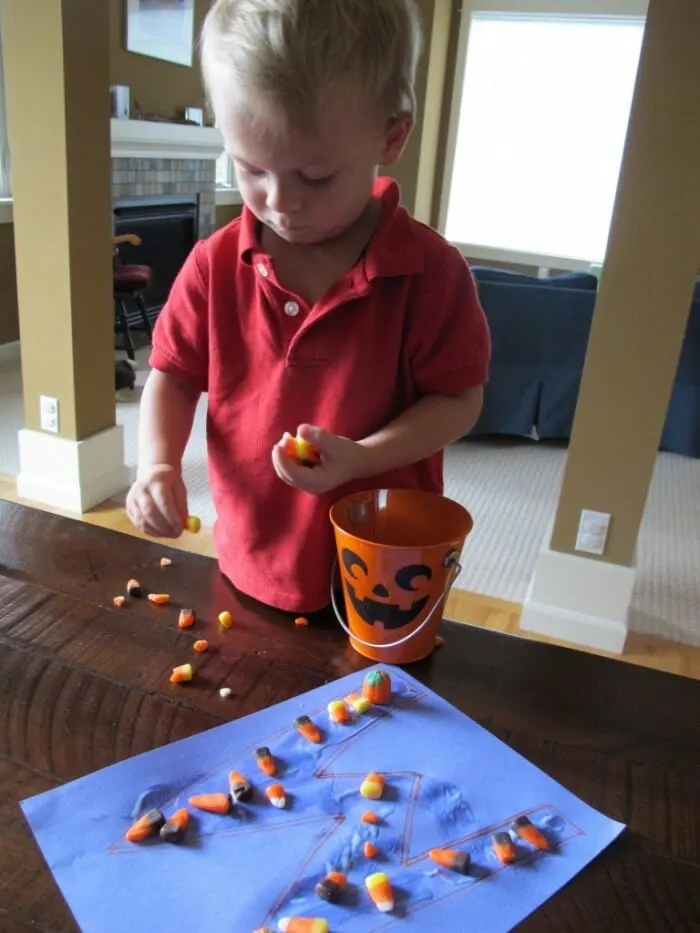
and in this one…
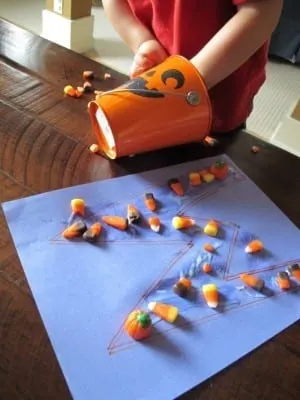
Then the mini pail “tipped” over and the candy corn began to trickle out (deviation #3).
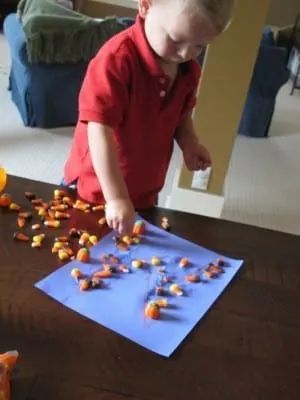
He still continued to place the candy corn on the glue (shockingly had yet to discover he could eat the candy corn).
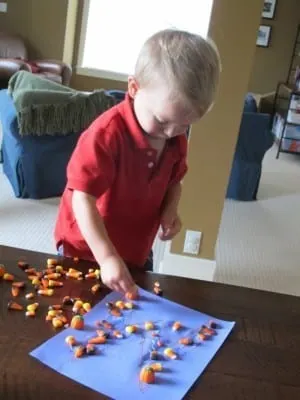
As he hinted at in earlier photos, he discovered that he can break apart the orange and the white/brown pieces of the candy corn (deviation #4).

“Look, Mama, now I have two pieces!”
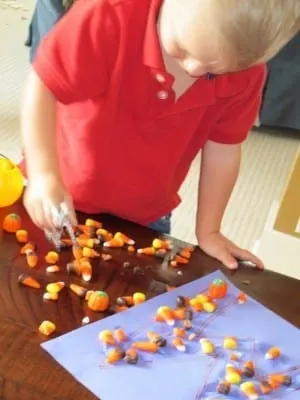
Then he ran all the way into the other room to grab his giraffe and zebra figurines (deviation #5).
“Look, Mama! The Giraffe is ‘crushing’ the corn and now he is very, very dirty!”
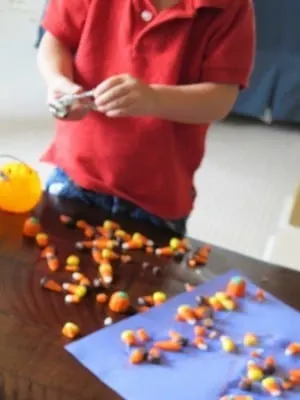
Observing the process was beautiful. I’ll admit, there were moments when I wanted to intervene and to continue pushing the language exercise but I think he got it. It is the Letter M. It is a sensory and fine motor experience.
And who knew that the activity could be a math and imagination experience too? So next time your little one is taking the activity in a direction you never could have planned for or imagined for yourself, let him go. Watch. See where he takes you.
Marnie
